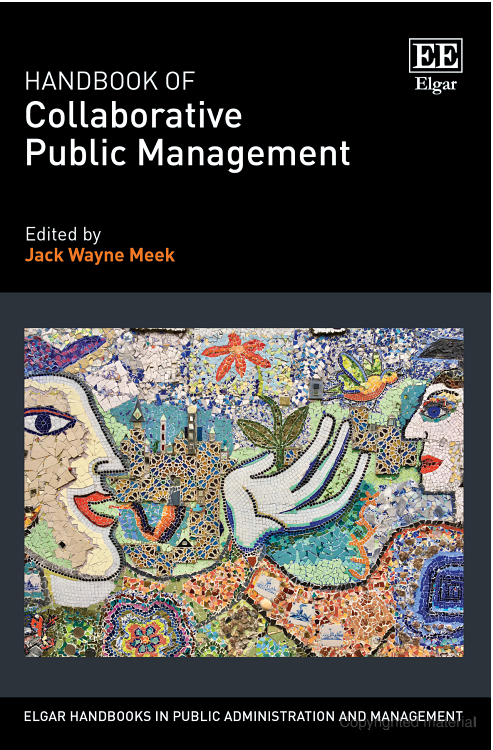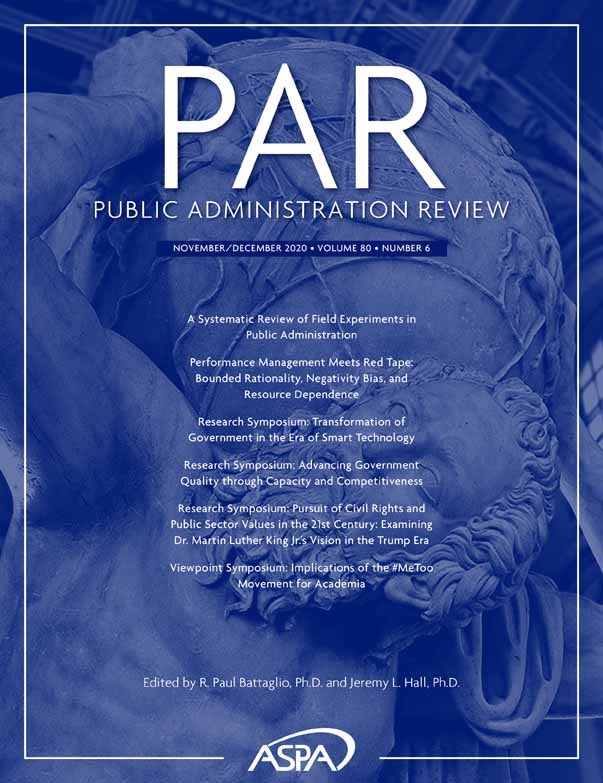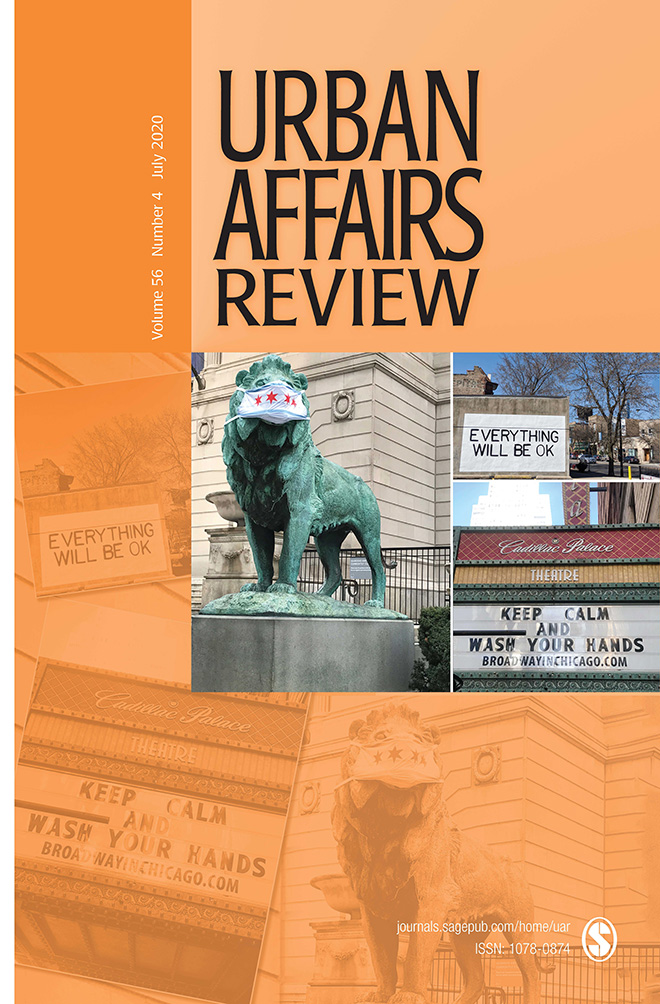NGL Publications and Working Papers
Local governments and shared services: Insights on institutional mechanisms, partners, and purpose Heading link

Local Governments and Shared Services: Insights on Institutional Mechanisms, Partners, and Purpose
book chapter by Jun Li, José Sánchez, Jered B. Carr, Michael D. Siciliano
Abstract: Local governments seek collaboration mechanisms to address increasingly constrained fiscal environments characterized by shrinking revenues and growing demand for services. Though research on interorganizational networks has increased rapidly in the past decade, critical gaps in our understanding of local public service networks remain. This study looks to address existing gaps by answering three critical questions: 1) How are actors connected with each other in these networks? 2) Who do they choose to partner with? and 3) What are the specific and shared objectives they pursue? To answer these questions, we conduct a content analysis of a random sample of 500 interlocal and inter-sector agreements from 10 policy areas over a 10-year period. The results of the content analysis revealed three important findings. First, the most common institutional forms to collaborate are service contracts, joint operations, and new joint entities, while the least common institutional mechanism is joint facilities. Second, city and county, general- and special-purpose government, and cross-sector collaborations are the most frequent groupings found across the service areas. However, collaborations between cities are rare in our sample. Finally, each agreement was coded based on its objective. We find that agreements focus more on the expansion of public access to the service rather than increased efficiency or effectiveness. Based on our findings, we offer several avenues for future research.
Analyzing the Effectiveness of Networks for Addressing Public Problems: Evidence from a Longitudinal Study Heading link

Analyzing the Effectiveness of Networks for Addressing Public Problems: Evidence from a Longitudinal Study
by Michael D. Siciliano, Jered B. Carr and Victor G. Hugg
Abstract: While scholars and practitioners frequently laud the potential of networks to address complex policy problems, empirical evidence of the effectiveness of networks is scarce. This study examines how changes in network structure (centralization and transitivity), network composition (sector diversity and geographic range), and tie properties (stability and strength) influence community level outcomes. Relying on a statutory requirement in the state of Iowa requiring local governments to file all instances of intergovernmental and intersectoral collaboration, we measure collaboration networks in 81 counties over 17 years in the areas of crime and economic development. Using fixed effects models, we examine how changes in the structure and composition of these county‐level networks affect substantive policy outcomes. Our findings indicate that network properties matter, but that the specific properties may be context dependent. We find network centralization and stability are stronger predictors of crime while network composition is more strongly associated with economic development.
Mechanisms of Network Formation in the Public Sector: A Systematic Review of the Literature Heading link

Mechanisms of Network Formation in the Public Sector: A Systematic Review of the Literature by Michael D Siciliano, Weijie Wang, Alejandra Medina
Abstract: This article provides a systematic review of the network formation literature in the public sector. In particular, we code and categorize the theoretical mechanisms used in empirical network research to motivate collaboration and tie formation. Based on a review of the 107 articles on network formation found in 40 journals of public administration and policy from 1998 to 2019, we identify 15 distinct theoretical categories. For each category, we describe the theory, highlight its use in the literature, and identify limitations and concerns with current applications. Overall, we find that most studies rely on a similar set of general theories of network formation. More importantly, we find that most theoretical mechanisms are not well specified, and empirical tests are often unable to directly assess the specific underlying mechanism. The results of our review highlight the need for our field to embrace experimental designs, develop panel network datasets, and engage in more network-level research.
Public Service - Function Types and Interlocal Agreement Network Structure: A Longitudinal Study of Iowa Heading link

Public Service – Function Types and Interlocal Agreement Network Structure: A Longitudinal Study of Iowa by Victor Hugg
Interlocal service delivery networks have become a prominent subject within the urban governance literature, with significant scholarly attention being focused on the political, legal, and demographic characteristics that influence an organization’s decision to join a collaboration network. However, despite being a theoretically significant factor, few analyses have examined the role that service-function type plays in shaping these networks. This research note replicates and extends previous tests of the hypothesized relationship between service-function type and network structure by relying on a comprehensive 25-year data set of interlocal agreements from the state of Iowa. Using hierarchical linear modeling, the positive relationship between networks of system maintenance service-functions and network centralization is confirmed after controlling for the significant moderating effect of time.
Benchmarking Local Government Services: Applying an Issue-Based Approach Heading link

Benchmarking Local Government Services: Applying an Issue-Based Approach by Saman Shafiq , Evgenia Kapousouz,
Michael D. Siciliano, and Jeffrey M. Gawel
Conventional benchmarking methods that rely on pre-existing measures may not be best suited for many of the challenges confronting local service delivery. This paper introduces an issue-based benchmarking method and describes the six-stage cycle implemented by a benchmarking collaborative in the Chicagoland region. Each stage of the process is discussed to highlight the approaches and tools used to identify the most salient issues and relevant performance measures. In the final section, we reflect on the changes we made to the process and overall lessons learned that we believe will help others attempting to engage in similar benchmarking efforts.
Measuring Accountability in Interlocal Agreements Between Indigenous and Local Governments Heading link
Measuring Accountability in Interlocal Agreements Between Indigenous and Local Governments
Zac Spicer, Tyler Girard, Jen Nelles, Christopher Alcantara
Interlocal agreements are becoming a popular policy tool for facilitating intergovernmental coordination and cooperation in Canada and the United States. Indigenous and local governments are also turning to these agreements despite long histories of colonialism, exploitation and dispossession by the settler State toward Indigenous communities. To what extent do interlocal agreements between Indigenous and municipal governments require stringent accountability measures to facilitate intergovernmental coordination? Using a hierarchical Bayesian item response theory model, we explore this question by analyzing 317 interlocal agreements between Indigenous and municipal communities in Canada. We find that accountability strength varies significantly across agreements, contrary to our expectation that accountability requirements would be strong across agreements due to the long history of colonialism. We also find that some of the variation may be a function of the policy area addressed by each agreement, although this finding is likely the result of measurement uncertainty in our estimates.